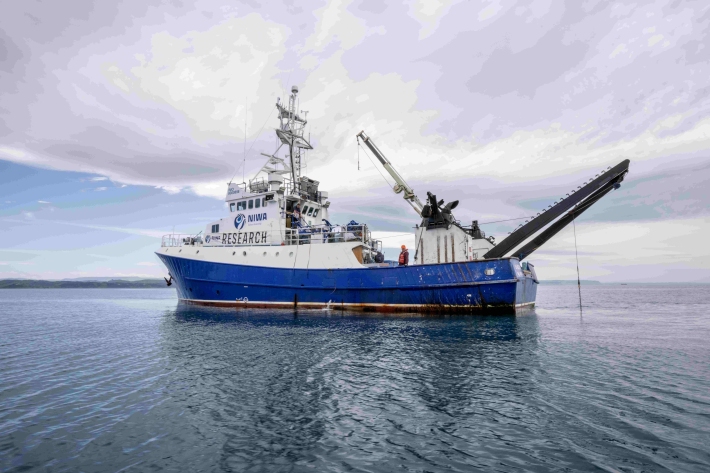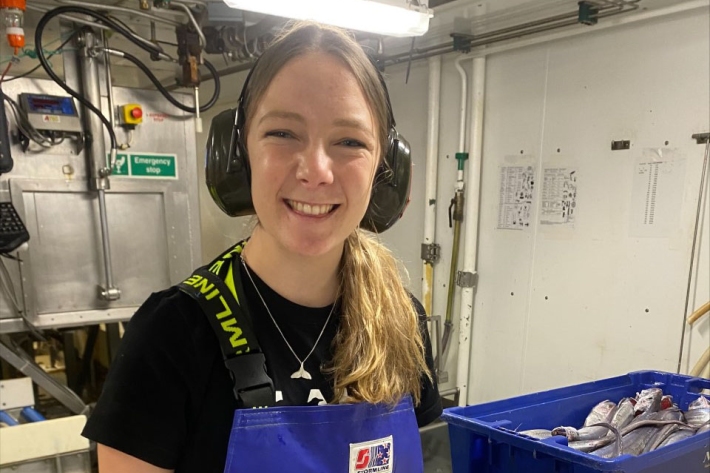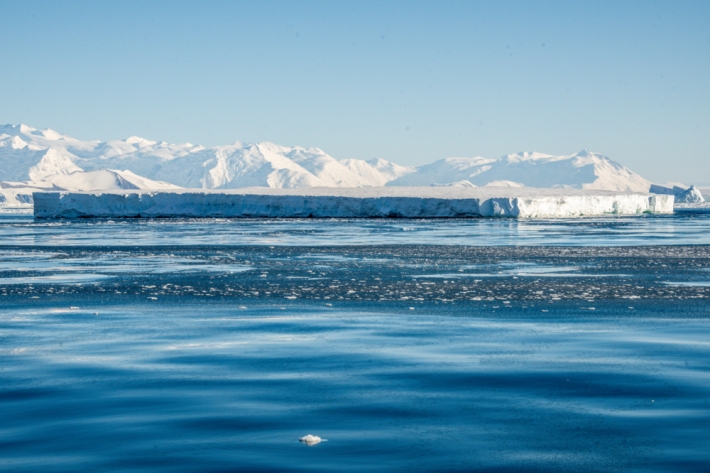-

Swathcam
ServiceNIWA’s underwater camera system providing crystal clear visibility -

Cyclone impacts on fisheries and seabed ecosystems - KAH 2303 & 2306
VoyageKaharoa Voyages KAH 2303 & 2306 -

Fisheries science
We aim to provide the key science services required by the national and international fisheries sectors and their industry partners. -

Assessing fisheries
We are developing and applying standardised stock monitoring and assessment methodologies for New Zealand's deepwater, inshore, and freshwater fisheries. -

Chatham Trawl Survey - TAN2201
VoyageThe NIWA research ship Tangaroa was chartered by the Ministry of Primary Industries to survey the hoki fishery on the Chatham Rise during January 2022. -

2021 - Antarctic Voyage
RV Tangaroa undertook a 45-day voyage to the Southern Ocean and Ross Sea in January-February, 2021. -

Chinook salmon
NIWA is working with major Chinook salmon producers to explore alternative farming technologies that circumvent the need for additional inshore marine farming space. -

Aquaculture nutrition
ServiceNutrition underpins the performance of fish stocks in terms of health, growth (production) and reproduction. -

Aquaculture Reproduction
ServiceOne of NIWA's core areas of research and consultancy services are the broodstock development of aquaculture species and breeding strategy. -

New research to understand the impact of marine heatwaves on fisheries
Media release15 October 2025A new report has outlined how gradual long-term warming of the waters around New Zealand, and an increase in short-term heat events, are likely under different greenhouse gas emission scenarios. -

Better forecasting fish abundances under climate change
Research ProjectNIWA are developing a modelling approach to better predict fish abundances in the past, to then be able to forecast fish abundances in the future under climate change and fishing scenarios -

Innovative Methods in Tackling Pest Fish: The Power of Sound and Light
Publication article20 March 2025Could bubbles and strobe lights stop pest fish swimming where they’re not wanted?

